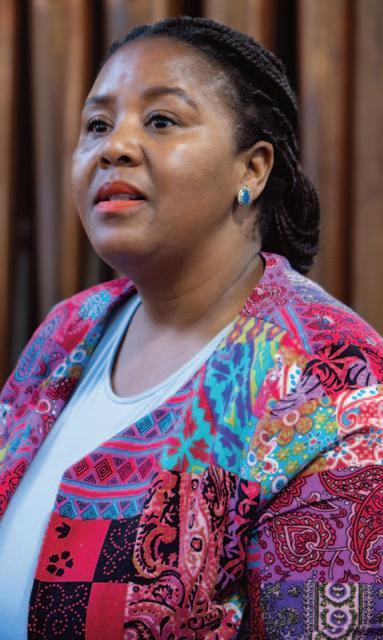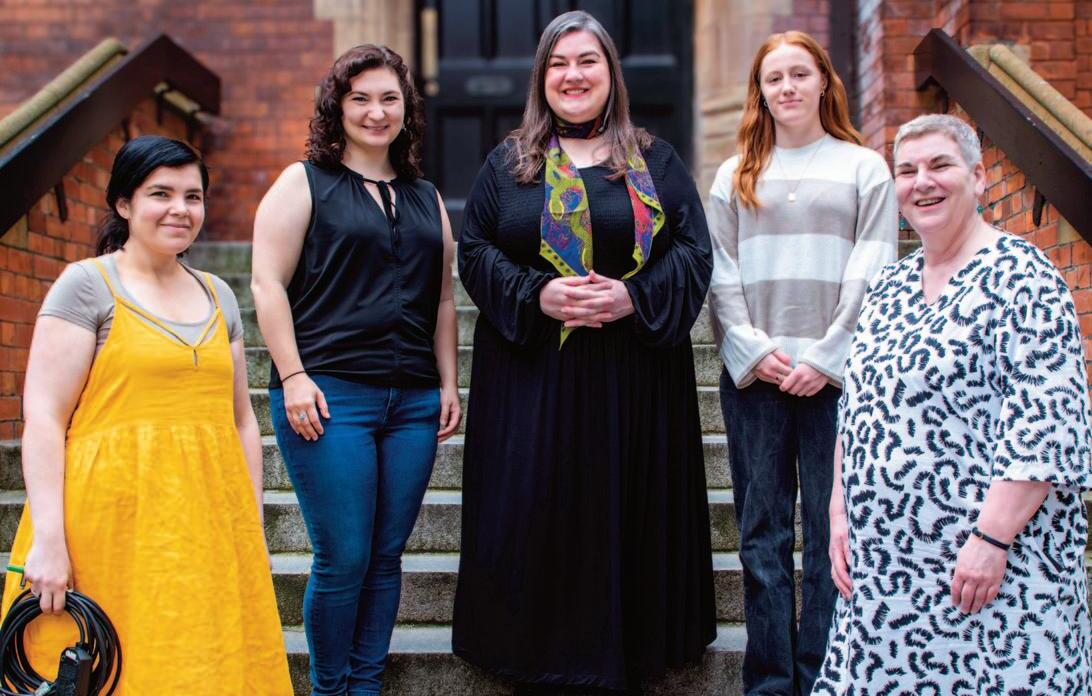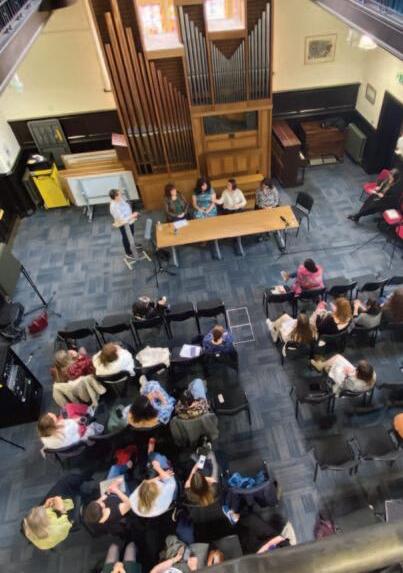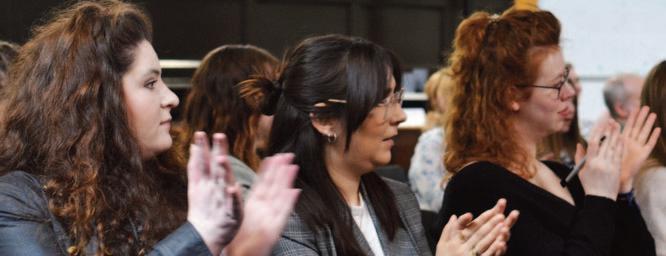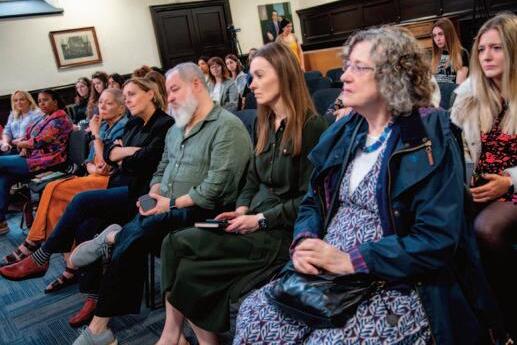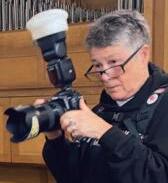









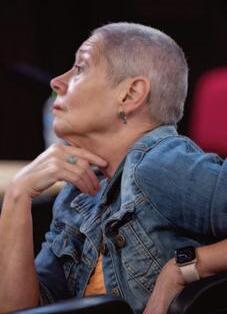


Women Seen & Heard Symposium, Queen’s University, Belfast, Saturday, June 22, 2024














Women Seen & Heard Symposium, Queen’s University, Belfast, Saturday, June 22, 2024
Una
This symposium is an engagement and partnership-building project funded by the Arts and Humanities Research Council through Queen’s University Impact Acceleration Account.
I organised the event to address the media industry’s challenge of successfully implementing equality, diversity, and inclusion policies for women practitioners.
My own experience from practice is that women in the media face structural obstacles due to caring responsibilities, and many senior leadership roles are still dominated by men.
As an independent researcher on the Global Report on the Status of Women in the News Media (2011), (https://www.iwmf.org/resources/globalreport-on-the-status-of-women-in-the-new s-media/) I carried out surveys with executives at many broadcasting organisations and newspapers in Northern Ireland.
The joint International Women’s Media Foundation (IWMF) and UNESCO study identified glass ceilings for women in 20 of 59 countries studied, commonly visible in middle and senior management positions.
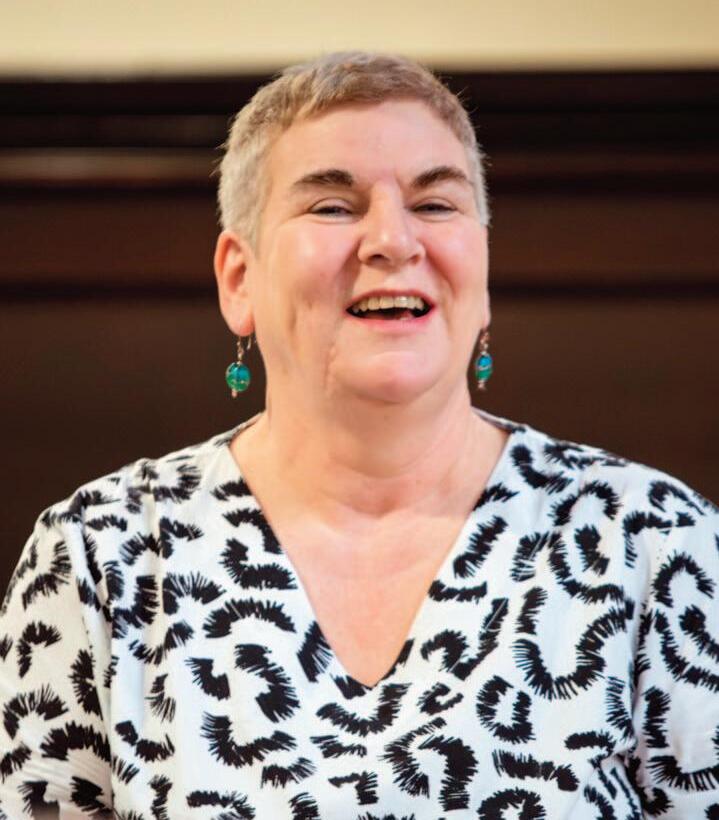
The report asked: “Are media companies currently organised to promote gender equity within their organisational structures or to accommodate women’s voices as well as men’s perspectives in coverage?”
This symposium will be an opportunity to consider this question.
Over the years, we’ve had social movements such as Black Lives Matter and MeToo.
This has led to Equality, Diversity, and Inclusion (EDI) becoming an important aspect of UK broadcasting, with companies promoting their policies and regular reporting by Ofcom, the UK media regulator, on whether these policies are tackling discrimination.
We’re considering today whether these policies have resulted in the media and broadcasting industry in Northern Ireland becoming more equal, diverse, and inclusive, in both content creation and leadership initiatives.
Does our media and broadcasting industry live up to the aims of Goal Five of the United Nations Sustainable Development Goals to ‘Achieve Gender Parity and Empower all Girls and Women’ by ensuring women
have opportunities to take on positions of leadership as well as fair representation?
The Women Breaking Barriers recent conference on the opportunities for women in the TV and film industry encouraged me to organise this event and to consider whether the equality, inclusion, and diversity policies in the industry are working.
I was also very encouraged by the International Women’s Day event at Belfast City Hall, organised by Amanda Ferguson, a journalist, writer, and broadcaster and cofounder of Women in Media Belfast, which was supported by the National Union of Journalists.
I’m pleased that NUJ representative Kathryn Johnston took part in this symposium and that Amanda is the MC today.
Finally, thank you to the women who have given up their time to be keynote speakers, chair discussions, and take part as panelists in today’s symposium.
Their lived experience in working in the media and broadcasting industry will help us to understand how to move forward to ensure that women are seen and heard.
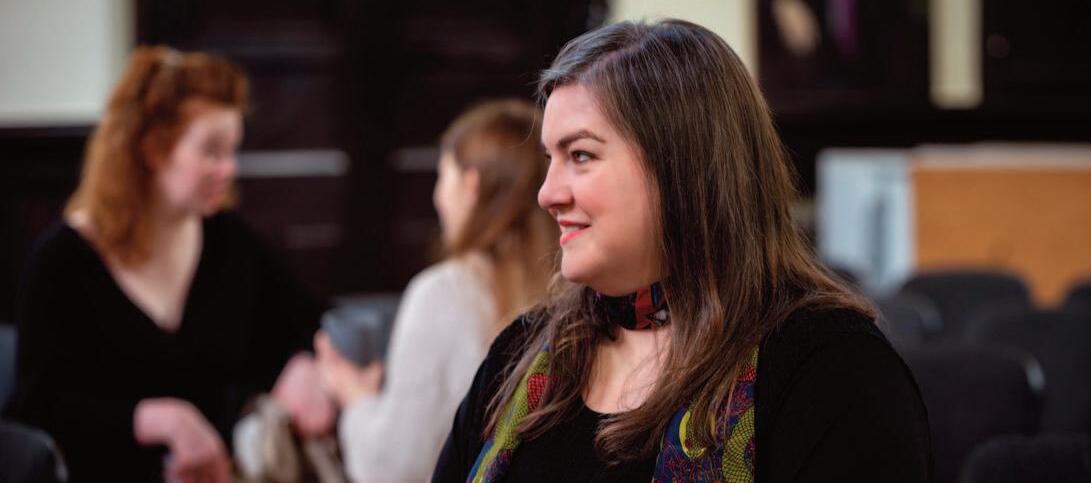
Journalist Amanda Ferguson who was the MC at the Women Seen & Heard
By Caoimhe Clements
Equality, diversity, and inclusion were central themes at the Women, Seen and Heard symposium at Queen’s University Belfast on Saturday, June 22.
The discussion, which explored the challenges that women face in the media, broadcasting, and film industry, was opened by Professor Karen McCloskey from Queen’s Gender Initiative and Dr. Kurt Taroff, Head of the School of Arts, English, and Languages.
‘Women Seen and Heard – Equality, Diversity, and Inclusion in Northern Ireland’s Media and Broadcasting Industry’ was organised by Una Murphy, a lecturer in Broadcast Production at QUB and cofounder of VIEWdigital, an online platform that independently produces and publishes social affairs journalism.
Una opened the event in the QUB music building’s Old McMordie Hall with a speech reflecting on the symposium’s purpose and her motivation for planning and developing it.
She said: “I have organised this event to address the media industry challenges of successful implementation of equality, diversity, and inclusion policies for women practitioners.”
The conference, hosted by the MC, journalist and broadcaster Amanda Ferguson, featured three speakers and three panel discussions.
The first panel, chaired by BBC journalist Elaine McGee, featured a group of inspiring women, including filmmakers Alison Millar and Margo Harkin and journalists Allison Morris and Mandy McAuley. They addressed various challenges and obstacles that women face in the media and journalism industry.
The main message of the discussion
focused on the importance of women and young girls having a strong sense of selfbelief and tuning out external noise.
WRDA’s Women’s Sector Lobbyist
‘’
It was a fantastic day. As a soon to be graduate with my MA Journalism degree, I found listening to experienced colleagues very crucial and important
Elaine Crory presented a recent report on gender equality in Northern Ireland. She spoke about the issue of gender inequality and further highlighted how sexual violence has become entrenched in the media.
Throughout the event, Goal Five of the United Nations Sustainable Development Goals, which aims to ‘Achieve Gender Parity and Empower all Girls and Women,’ was frequently mentioned and referenced.
This goal seeks to end all forms of discrimination against women and young girls, including sexual violence in both public and private spaces.
Achieving this goal is crucial for providing women with opportunities to assume leadership positions and ensuring fair representation.
The audience also heard from Dr. Elspeth Vischer, a filmmaker and researcher with a Ph.D. from QUB specialising in
documentary style.
She is the creator and director of Let Us Be Seen, which explores grassroots feminism in Belfast, featuring activists, educators, and artists. The documentary focuses on the landmark changes in the law in 2019, which decriminalised abortion and legalised same-sex marriages.
The second panel, chaired by Amanda Verlaque, focused on ongoing efforts around diversity, equity, and inclusion.
It featured Belfast Feminist Film School co-founders Oonagh Parish and Jolene Mairs Dyer, HaZimation co-founder Paula Crickard, and Eimhear O’Neill, head of development at Fine Point Films.
Following this, writer and poet Nandi Jola shared her experiences as a Black woman from South Africa working and living in Northern Ireland and her thoughts on colonialism, community, and inclusion.
The third panel, chaired by Belfast Telegraph journalist Niamh Campbell and featuring author Amelia Kai, filmmaker Lia Campbell, and Irish News reporter Flavia Gouveia, examined the challenges faced by young women in the industry.
‘Women Seen and Heard’ effectively addressed gender inequality, diversity, and inclusion in the media industry.
Through presentations and discussions, the event highlighted the need to empower women and tackle challenges. Concluding with a Q&A session and networking lunch, the symposium emphasised the need to continue advocating for a better and safer media landscape for women and young girls.
It was a fantastic day. As a soon-to-be graduate with my MA in Journalism degree, I found listening to experienced colleagues very crucial and important.
I am looking forward to Belfast’s next media industry event.
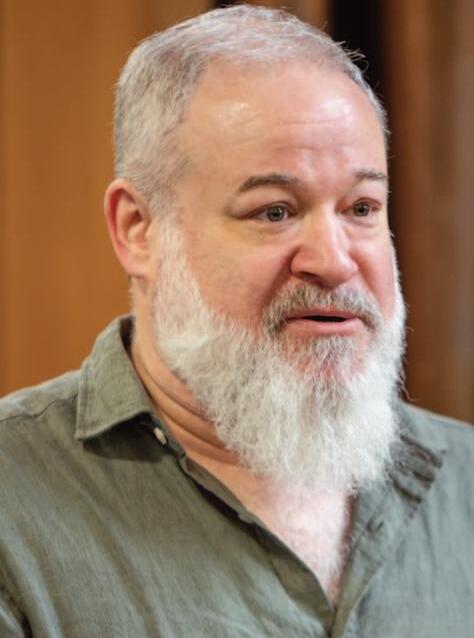
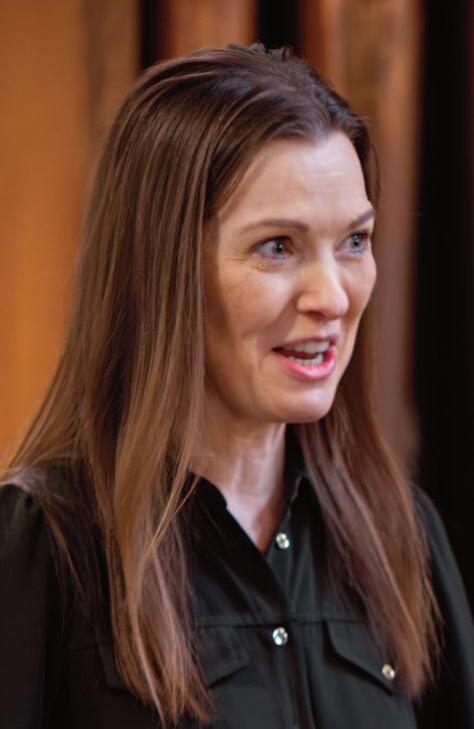
By Dr. Kurt Taroff, Head of the School of Arts, English and Languages, Queen’s University Belfast
I was incredibly pleased to be asked to address the Women Seen and Heard Symposium.
The issues of equality and visibility for women in media and the arts are of enormous significance in securing a society that is more equal across all areas of civic life.
Here at Queen’s, we are very well aware that our subjects in Broadcast and Media, Drama, Film, Music, and English and Creative Writing are populated by significantly more female students than male, by nearly a two-to-one margin.
This is true across the UK and has been the case for many years now. And yet, despite this clear prevalence of women in education and training in these fields, progress in achieving even basic equality in these professions remains halting.
There is enormous work still to be done toward equal representation for women on screens and stages, and there is little doubt that this reflects an institutional environment (whose work gets produced, who runs the organisations, etc.) still heavily weighted toward men.
As academics, we cannot, on our own, rebalance these inequities, but we have a responsibility to interrogate their causes, which the symposium very effectively addressed, and to train our students to enter the industry with a deep understanding of the challenge and necessity of achieving gender equality in media, the arts, and all of society.
The voices heard in the symposium represent a remarkable roster of women making a difference in journalism, film, theatre, television, and more. They are evidence of a changing sector and a light toward a more equal future.
I want to congratulate Una Murphy, from the Broadcast Department here at Queen’s, on organising this outstanding symposium.
We’ve come a long way. But we have a lot more to do
By Professor Karen McCloskey, Queen’s University
I want to welcome everyone to this wonderful event. I am the director of Queen’s University’s Gender Initiative and the academic lead for the university’s Race Equality Charter.
Twenty-five years ago, Queen’s was looking for a new Vice Chancellor. Around that time, a group of senior women said it was time something was done about the underrepresentation of women at the university. One of the questions posed to the candidates for the top job was: if you are appointed to the role, what would you do about gender inequality at Queen’s?
The person appointed was Professor Sir George Bain. He and his administration made gender equality a priority for his term of office at Queen’s. He brought together a group of senior women and said, “We need solutions to the problem. I’ll resource them, but you need to tell me what they are.”
I’m told they instigated engagement to hammer out the issues. From that, the first Queen’s Gender Action Plan came together. They had 12 objectives, such as flexible working. Career progression was also one of the biggest problems to fix. Queen's Gender Initiative (QGI) was formed to advance the progression and participation of our women – from the classroom to the boardroom across Queen’s.
Of those 12 objectives, visibility and voice were also priorities. It was clear at that time in Queen’s that many walls in rooms and halls did not have any images of women. The QGI commissioned portraits of women, and you will see them in the Great Hall and art installations.
About one in three of our professors are now women. Twenty-five years ago, it was one in ten. We’ve come a long way, but we have a lot more to do.
We’re really proud to be supporting this symposium.
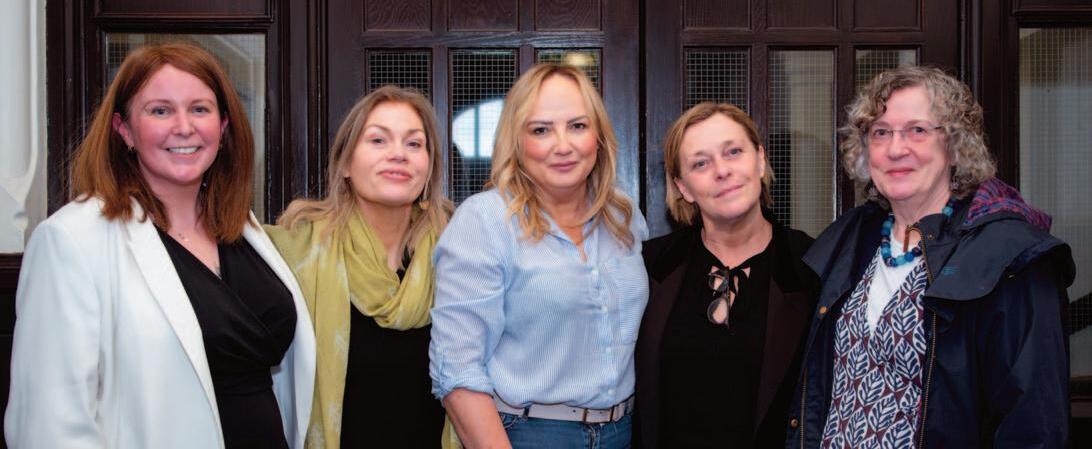
By Elaine Crory, Women’s Sector Lobbyist
This year, I produced a report on the state of gender inequality in Northern Ireland. My predecessor in the role of Women’s Sector Lobbyist had done the same four years earlier, and we wanted to see how things had progressed and how they hadn’t.
The resulting report is available on our website (wrda.net). I am going to highlight key figures and draw out trends.
The first trend that was clear to me is that statistical data has become harder to find. The next trend that is undeniable is that women’s economic inequality is worsening at a frightening rate.
We know that the gender pay gap persists, but it’s much more than that. On the employment front, women are more likely than men to work part-time, earn less per hour, and be in precarious work with limited options for career progression. They also face sex discrimination in the workplace—the second largest ground for complaint to the Equality Commission NI—and sexual harassment, which accounts for 22 percent of complaints to ECNI in 2022.
Away from work, the situation is worse. Most women who are, in the government’s words, “economically inactive” are caring for someone else—at a rate seven times that of men, and in fact, ten times more for women in their 30s.
These women have been at the sharpest edge of austerity for the last 14 years and have lost £79 billion in total from various cuts, caps, and the disappearance of social programmes (against £13 billion for men).
Women are twice as likely to be
referred to a food bank. Disabled women, rural women, and lone parents (93 percent of whom are women) suffer most of all as government support withers. Meanwhile, the care that many of these women provide counts, apparently, for nothing, and we still don’t have a childcare strategy or proper support for those who care for adults.
A third trend is that violence against women and girls continues to worsen. In 2023, there were 33,071 recorded domestic abuse incidents reported to the PSNI, an increase from the previous year. In 2022-23, there were eight domestic abuse-related homicides in Northern Ireland.
Since I produced this report in April, two more women have been murdered in their own homes in Northern Ireland. Overall, domestic abuse-related crime accounts for 20 percent of all recorded crime. Meanwhile, in 2023, there were 4,184 sexual offences recorded, of which 1,186 were reports of rape. In the same period, there were 4,153 reports of stalking and harassment.
It’s not entirely doom and gloom, though. Since the previous report on gender inequality in 2020, we have new legislation on domestic abuse, stalking, and non-fatal strangulation.
These help to correctly charge perpetrators and, hopefully, provide justice to individuals impacted as well as raise public awareness.
But this is not enough; we urgently need to invest in protection. We have a draft Violence Against Women and Girls strategy that focuses on protection, but without investment, it will achieve nothing—we are miles behind other jurisdictions on these islands.
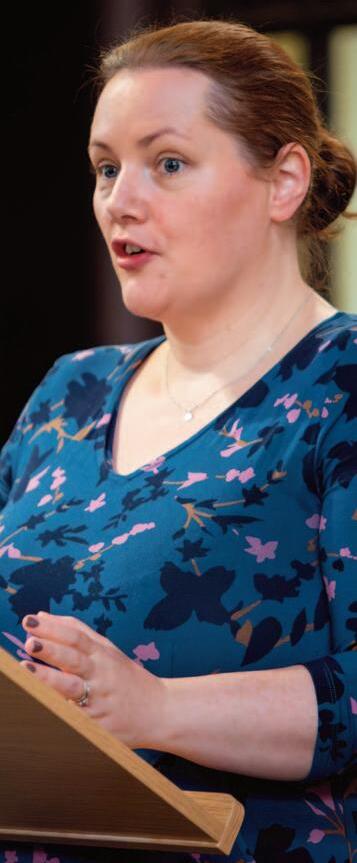
Inequality: Elaine Crory
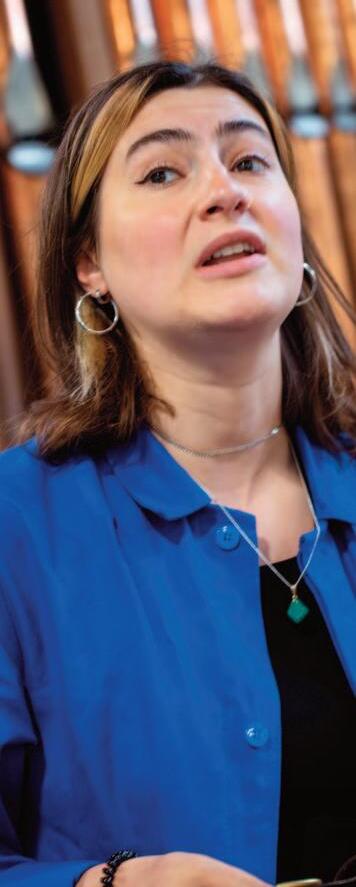
Filmmaker: Dr. Elspeth Vischer
By Dr Elspeth Vischer, Coordinator, Northern Ireland Now
I’m a filmmaker and project coordinator. I’m going to mention two projects today that aim to address underrepresentation on screen, which I think connect well with today’s themes around women in media and being seen and heard.
The first is my practice-based PhD, Let Us Be Seen: Documenting and Analyzing Grassroots Feminism in Belfast, 2019–2021, which involved the making, showing, and discussion of an 80-minute documentary Let Us Be Seen and written research.
The second is the project I am coordinating with Nerve Centre, partnered with Northern Ireland Screen, called ‘Northern Ireland Now: Contemporary Collecting.’
It involves working directly with diverse community groups across the North to make a new video collection on the Digital Film Archive that addresses gaps and underrepresentation in the film archive, particularly with regards to the representation of women, LGBT+ people, migrant and refugee communities, ethnic diversity, individuals who are deaf and disabled, as well as younger, rural, and working-class people.
It’s a brilliant project, and I look forward to talking to you more about it.
Firstly, I will play the trailer for my research film Let Us Be Seen. To provide some context, this was completed in 2022
and made around the legislative change in Northern Ireland to decriminalise abortion and legalise same-sex marriage, which came about via Westminster ruling on October 21, 2019.
The film aimed to work with those on the ground to showcase a selection of perspectives of activists, artists, and educators working in Belfast at this time. Production was hampered by lockdown, but overall, we managed to conduct interviews with some 33 individuals to create a kind of oral history patchwork of perspectives.
Structurally, Let Us Be Seen is made up of ‘chapters’ under the headings ‘Our Bodies, Our Lives, Our Rights to Decide: The New Interface.’ This final chapter heading came from a speech by Bernadette Devlin McAliskey in the early part of the film on September 7, 2019, the final pro-choice rally in Belfast, prior to decriminalisation the next month.
My research and freelance work with individuals in Belfast influenced my decision to apply to work on this current project with Nerve Centre and Northern Ireland Screen, as I am very passionate about underrepresented stories on screen and how to democratise media so that individuals can be seen and tell their own stories.
The Northern Ireland Now project aims to do this through working with 12 community groups all over the North to gather contemporary videos and make a new collection on the Digital Film Archive.
Second panel: What’s being done on diversity, inclusion and equality?
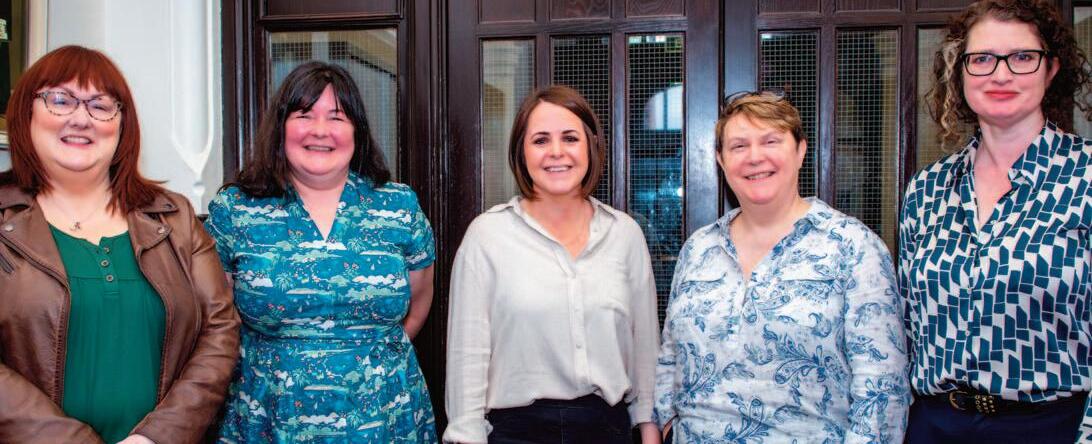
I am a black woman who wants to tell stories in any spaces I can find
By Nandi Jola, writer and poet
I first came to Queen’s University in 2002. I was also a single mother. I had so many ambitions and dreams. Coming from apartheid South Africa, I had always thought of Queen’s University as being revolutionary in some ways. But I found myself in a place of horror when I looked at all the symbols of colonialism and slavery here and the money that it took to build this institution.
I challenged that by speaking up against its curriculum. One of the ways to become a poet here is to become a student. They can’t deny me if I have a thesis. It’s too late now to throw me out.
There are two things that stick with me when it comes to the media. When there is an incident of racism, the BBC and other media outlets all know my phone number or email. They will contact me and ask for a comment. But when I want to challenge something, no reporter wants to come near me.
One way that I have found to deal with this situation is to write poetry. I have also started to write plays. I have a new piece of work called The Rise of Maqoma. In this play, I am challenging museums. I discovered objects that were looted from South Africa. My play is about a stick that is in the National Museum of Ireland in Dublin. It came to Ireland in 1873 and was donated to the museum in 1880.
The stick belonged to Jongumsobomvu Maqoma, the Chief and Commander of the Xhosa forces in South Africa. He lost his life while imprisoned on Robben Island.
My intentions in this story are very clear. I am a black woman who has, for a long time, inherited trauma from being colonised. I grew up under apartheid. My memories are of colonialism. I want to tell my stories in any spaces I can find.
Thank you so much for listening to me.
